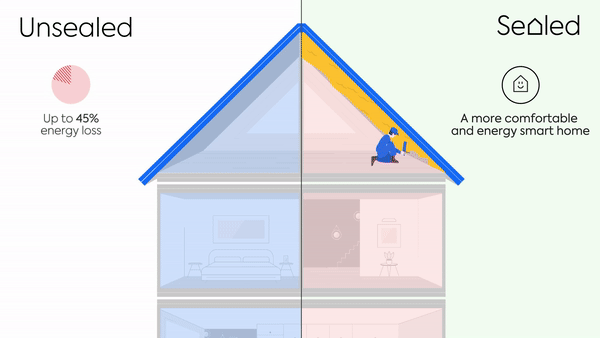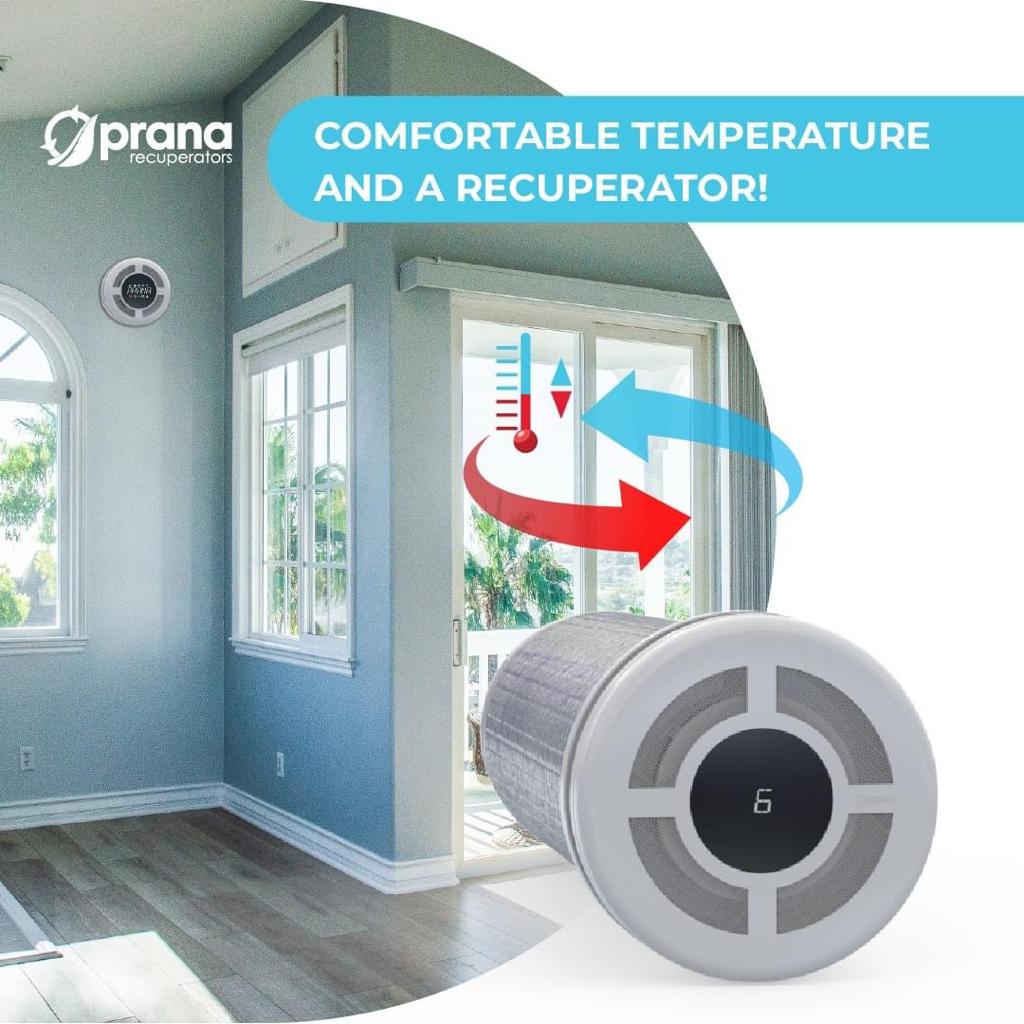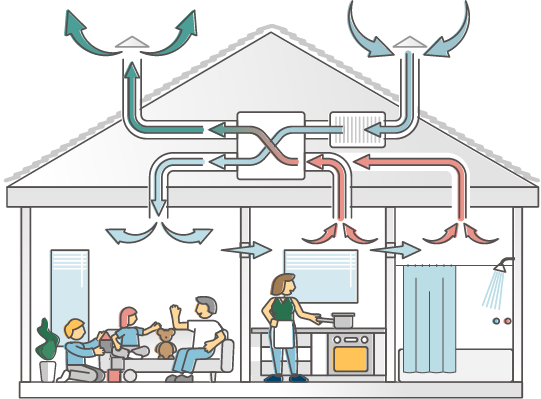Comprehending the Relevance of Home Air Flow for a Healthier Living Atmosphere
Home ventilation plays an important role in preserving a healthy and balanced living atmosphere. It facilitates the exchange of indoor and outside air, which is essential for improving air top quality. Without correct air flow, homes can come to be breeding premises for contaminants and irritants. The consequences of insufficient air circulation can be considerable. This brings up the inquiry of how house owners can properly execute ventilation approaches to protect their wellness and well-being. Comprehending these techniques is imperative.

The Basics of Home Air Flow
Home air flow offers as a necessary component of indoor air top quality and convenience. It entails the process of exchanging stagnant indoor air with fresh outdoor air, thus reducing humidity and regulating temperature. Correct ventilation systems can include all-natural methods, such as open home windows and vents, as well as mechanical systems, such as exhaust followers and air exchangers. Reliable home ventilation helps prevent issues like indoor mold development and the buildup of unsafe bits. It additionally boosts total energy efficiency, as well-ventilated spaces can keep comfortable temperatures with less reliance on heating and cooling down systems. Comprehending the essentials of home ventilation is important for property owners seeking to create a healthier living setting for themselves and their households.

Typical Resources of Indoor Air Air Pollution

Several may not understand it, interior air contamination can originate from various sources within a house. Common contributors include unstable organic compounds (VOCs) sent out from paints, solvents, and cleaning products. Household home appliances, such as gas cooktops and fireplaces, can release harmful gases like carbon monoxide and nitrogen dioxide. In addition, mold and mildew and mildew flourish in wet locations, launching spores that influence air high quality. Family pet dander, allergen, and plant pollen can gather indoors, more aggravating contamination degrees. Cigarette smoking indoors generates harmful chemicals that linger airborne. Finally, building materials, consisting of asbestos and formaldehyde, can off-gas hazardous compounds. Identifying these resources is important for preserving a healthier interior setting and promoting effective air flow methods.
Health And Wellness Effects of Poor Ventilation
Indoor air pollution can have considerable health ramifications, specifically when air flow is inadequate. Poor ventilation can result in the accumulation of harmful pollutants, such as volatile natural compounds, mold and mildew, and particulate issue. This build-up may cause breathing problems, consisting of bronchial asthma, allergies, and chronic obstructive lung illness. People might experience symptoms like migraines, tiredness, and inflammation of the eyes, nose, and throat. Prone populations, such as kids and the elderly, are at greater risk for severe wellness effects. Long-term exposure to poorly aerated atmospheres can also add to extra serious problems, including cardio diseases. Consequently, making certain appropriate ventilation is vital for maintaining a healthy and balanced living atmosphere and lowering the threat of health and wellness problems linked with interior air pollution.
Efficient Air Flow Strategies for Your Home
Appropriate ventilation is vital for preserving a healthy and balanced interior setting, and executing efficient strategies can significantly enhance air high quality. Homeowners can begin by guaranteeing that exhaust followers are installed in kitchens and washrooms to eliminate excess wetness and odors. Opening home windows consistently permits fresh air to distribute, especially throughout mild weather condition. Furthermore, making use of air purifiers with HEPA filters can assist record airborne toxins. For homes with home heating and cooling systems, preserving heating and cooling systems and changing filters routinely is essential for peak performance. Integrating natural air flow techniques, such as cross-ventilation, can likewise boost air movement. Securing any leaks in doors and windows stops undesirable drafts, which can interfere with controlled airflow, ultimately leading to enhanced interior air high quality and convenience.
Keeping Optimum Air Quality Year-Round
To maintain perfect air top quality year-round, house owners have to take on an aggressive approach to managing their indoor environment. On a regular basis monitoring indoor air quality is vital; this consists of monitoring for toxins such as dirt, have a peek at these guys mold and mildew, and unstable natural compounds (VOCs) Implementing effective air flow systems, such as exhaust followers and air cleansers, can substantially reduce airborne impurities. In addition, regular upkeep of cooling and heating systems assurances peak performance and air blood circulation. Home owners must likewise consider humidity levels, as extreme wetness can result in mold development. Seasonal modifications may demand modifications in ventilation techniques to suit differing outdoor air top quality. By focusing on these techniques, homeowners can develop a healthier living space, advertising general well-being for all owners throughout the year.
Often Asked Questions
Exactly How Can I Tell if My Home Requirements Much Better Air Flow?
To identify if a home requires far better ventilation, one must observe signs such as persistent moisture, mold development, mildewy smells, condensation on windows, or increased allergic reaction signs and symptoms, suggesting inadequate air movement and potentially poor indoor air quality.
What Are the Indications of Poor Indoor Air Quality?

Can Houseplants Improve Indoor Air Quality Efficiently?
The effectiveness of houseplants in boosting indoor air top quality is questioned. While some research studies suggest they can soak up toxins and generate oxygen, their general impact may be minimal contrasted to proper air flow and air purification systems.
Exactly how Typically Should I Modification My Air Filters?
The regularity of air filter changes generally relies on usage and a knockout post filter kind. Generally, it is suggested to change filters every 3 months, though homes with family pets or allergic reactions Resources might call for more frequent modifications for perfect performance.
Exist Any Kind Of Specific Ventilation Systems for Allergy Sufferers?
Lots of air flow systems, such as HEPA-filtered devices, effectively decrease irritants airborne. Home Ventilation Melbourne. These systems catch pet dog, plant pollen, and dirt dander, giving allergic reaction sufferers with a cleaner, healthier indoor atmosphere while handling air top quality effectively
It helps with the exchange of interior and outside air, which is important for enhancing air top quality. Home air flow offers as an important element of indoor air top quality and convenience. It includes the procedure of trading stale interior air with fresh exterior air, consequently lowering humidity and controlling temperature. Interior air pollution can have substantial wellness implications, particularly when ventilation is poor. Proper ventilation is essential for keeping a healthy and balanced indoor setting, and executing reliable approaches can significantly enhance air high quality.